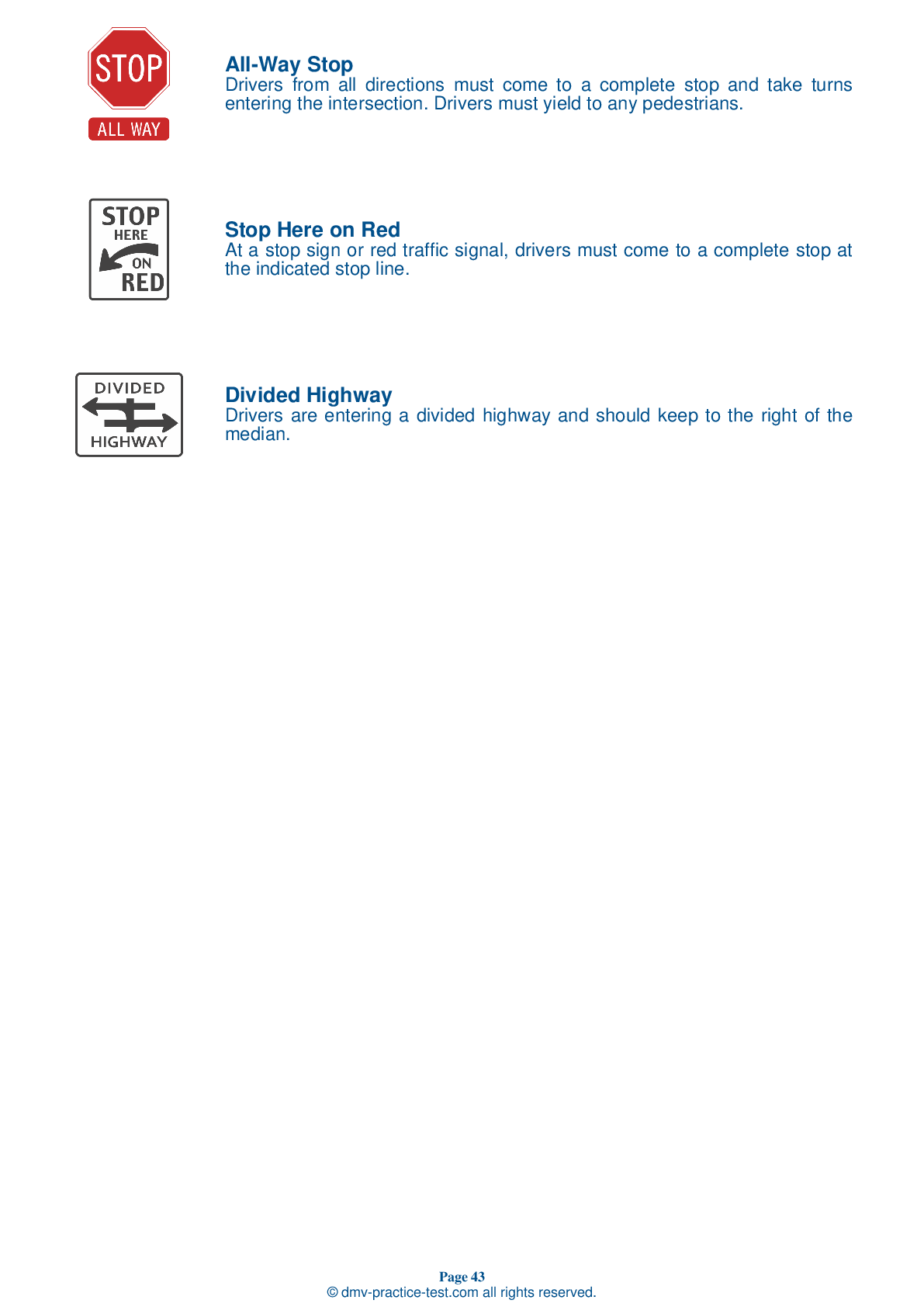FREE Connecticut DMV Practice Test #7 Page 3 of 3
This set of Connecticut DMV practise tests was just updated for January 2026. It includes questions based on the Connecticut Driver Handbook's most essential traffic signs and regulations for 2026. Use actual questions that are very similar (often identical!) to the DMV driving permit test and driver's licence exam to study for the DMV driving permit test and driver's licence exam.
Each practise test question has a hint and explanation to assist you in remembering the concepts. The written component of the official DMV test will include questions about road rules, traffic signs, and driving statutes, as well as information from the Driver Handbook.
To achieve the required passing grade, you must correctly answer 20 of the 25 questions. Take our DMV practise exam to help you prepare for your Connecticut instruction permit or driver's licence.
The DMV exam is available in several languages.
Using any form of testing help will result in an automatic fail, and the DMV may take further action against your driver's licence, so avoid it.
17 . Fatigue increases the risk of:
Fatigue causes errors related to speed and distance, increases your risk of being in a crash, and causes you to take more time to make decisions. When you are fatigued, you could fall asleep behind the wheel and crash, injuring or killing yourself or others.
18 . Before you change lanes, you should check your mirrors and:
Before changing lanes, it is very important to check behind you. You should look over your shoulder to ensure that you are not getting in the way of vehicles in the lane you want to enter. Before changing lanes, you should also ensure that no drivers are attempting to drive into the same spot from a different lane.
19 . When driving in fog, it is best to drive with:
Use your low beam headlights when driving in fog, rain, or snow. High beam lights can reflect off the weather conditions, lowering visibility even more.
20 . This sign means:

This sign indicates that a divided highway begins ahead. Keep to the right of the median divider.
21 . On a multilane road, a dashed yellow line next to a solid yellow line means:
Where there are both solid and dashed yellow lines between lanes of traffic, only traffic directly next to the dashed line may cross the centerline to pass. Drivers next to the solid line may not pass.
22 . When driving in a construction zone:
You may encounter unexpected conditions in a construction zone. For the safety of yourself, other drivers, and construction workers, drive with extraordinary caution.
23 . This sign means:




